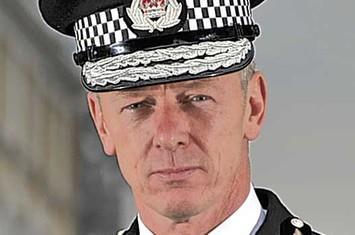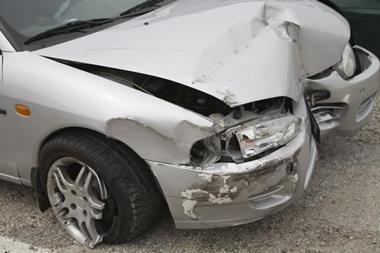Motor Insurers' Bureau reveals top spots for uninsured drivers
As part of the Stay Insured campaign, the annual list of the UK’s top regional hotspots for drivers going without insurance has been released, with Barkerend in Bradford retaining the number one position over the last 13 years.
The top five postcodes for driving without insurance – based on research from Motor Insurers’ Bureau (MIB) over the same period include:
1. BD3 (Barkerend, Bradford), West Yorkshire
2. M12 (West Gorton, Manchester), Greater Manchester
3. B10 (Small Heath, Birmingham), West Midlands
4. B21 (Handsworth, Birmingham), West Midlands
5. B8 (Saltley, Birmingham), West Midlands
A closer look at the figures reveals significant progress in the fight against uninsured driving, with an overall 20 percent reduction in the number of uninsured vehicles on UK roads over the past four years, from 1.8 million to 1.5 million.
This is reflected in the progress made in key hotspot postcodes through dedicated police activity. Although Barkerend tops the overall hotspot rankings, the issue of uninsured driving is being addressed, with the BD3 postcode dropping to fourth place between 2007 and 2009.
Similarly, West Gorton in Manchester – which remains second in the overall top ten hotspots list – has fallen to tenth place over the same period, also demonstrating a significant improvement.
Although regionally ranked fourth, the West Midlands accounts for half of the top ten worst offending postcodes. However, the volume of uninsured drivers in the region is still lower than in previous years and the police are committed to reducing this further, not least in Small Heath, Birmingham which currently tops the 2007-2009 list.
In addition to the postcode rankings, data about the level of uninsured driving in each police region is available. The Metropolitan area is top of the regional list, with 1 in 10 vehicles estimated to be uninsured, making it more than twice as likely for drivers in London to have an accident with an uninsured motorist. The top five worst offending police regions are:
1. Metropolitan (11%)
2. Merseyside (10%)
3. Greater Manchester (8%)
4. West Midlands (6%)
5. West Yorkshire (6%)
Although there has been a significant reduction in the number of uninsured vehicles on the road in the past few years, with 23,000 people injured and 160 killed every year by uninsured drivers it is clear that there is still work to be done.
Driving without insurance is a criminal offence and police forces across the UK are committed to reducing the numbers of uninsured drivers from the road even further.
Using Automatic Number Plate Recognition (ANPR) technology, which links to information on the Motor Insurance Database (MID) – the only central record of 34 million insured vehicles in the UK - police are able to detect and seize uninsured vehicles at the roadside.
Police report that 180,000 vehicles were seized last year, taking the total to more than 600,000 since laws were introduced in 2005, and last year 194,000 people were convicted in Court for uninsured driving – that is one conviction every three minutes.
In addition to vehicle seizure, the consequences of being caught driving without insurance are severe and include a £200 fixed penalty, six penalty points, £150 car recovery charges and the need for drivers to purchase valid motor insurance in order to retrieve the seized vehicle.
If the vehicle is not claimed within 14 days – and 40 percent are not - it can be crushed or sold.
Ashton West, Chief Executive at MIB said: “The 20 percent reduction in the number of uninsured drivers on the roads is a significant step in the right direction, particularly in key hotspots such as Barkerend in Bradford and West Gorton in Manchester.
"The level of seizures and criminal convictions demonstrates that uninsured drivers are consistently being caught and removed from the road. But more drivers need to buy a policy to cover them on the road.
“We understand that times are tough and finances may be squeezed but motor insurance is a legal requirement. Even though the number of new claims reported to MIB is reducing, the costs to the industry and ultimately the honest motorist are just too high.
“There are ways in which drivers can save on costs and stay adequately insured, such as shopping around for quotes, opting for pay-as-you-drive cover or taking advanced driving lessons.
“The next development in tackling the unacceptably high levels of uninsured driving in the UK, is the introduction of continuous insurance early next year– which means that the Motor Insurance Database will be used to reach registered keepers of vehicles without insurance. This is expected to achieve the long overdue step change in reducing uninsured driving.”
Association of Chief Police Officers (ACPO) lead on roads policing Chief Constable Mick Giannasi of Gwent said: “The removal of uninsured vehicles from the road is key to maintaining safer roads and communities and a 20 percent reduction in the number of uninsured drivers on our roads is encouraging.
"More enforcement combined with better technology and the power to seize vehicles at the roadside is obviously having an impact.
"Uninsured drivers are more likely to be involved in other criminal activities and by targeting them and seizing their vehicles we are preventing them from putting other road users at risk. It also builds confidence in law abiding citizens who can see that something is being done to get uninsured drivers off the roads.
"The sooner drivers realise that the penalties for driving without insurance outweigh the risks, the safer our roads will be for everyone.”






































No comments yet